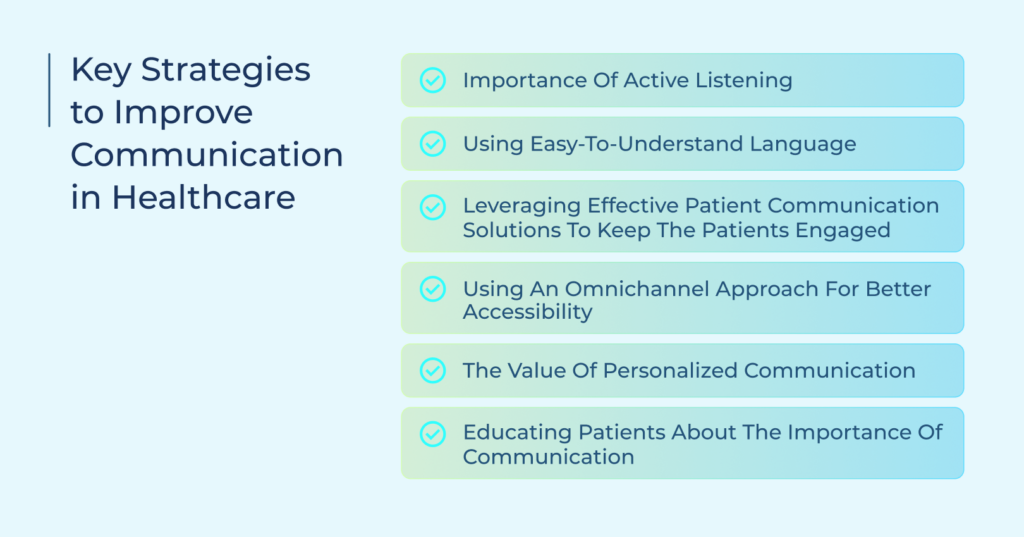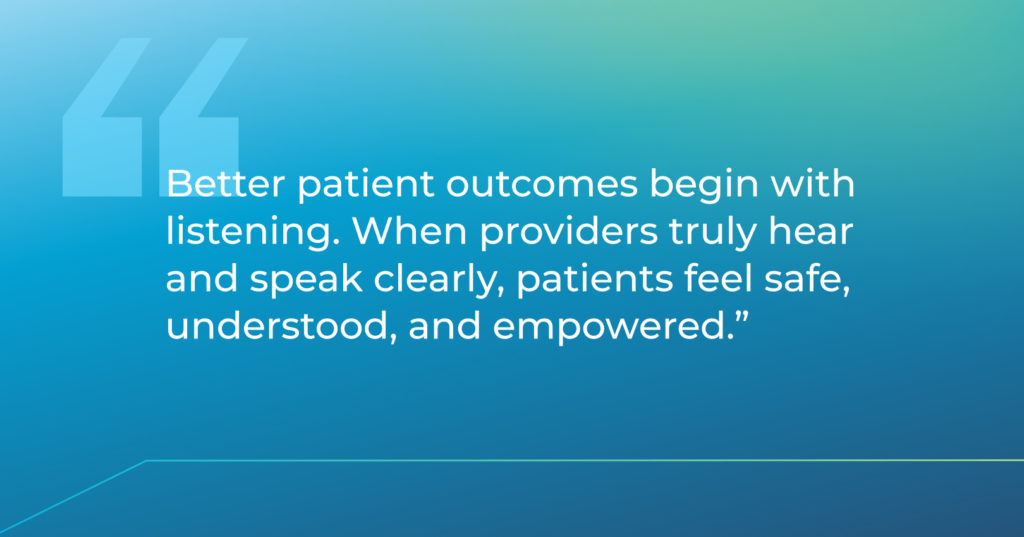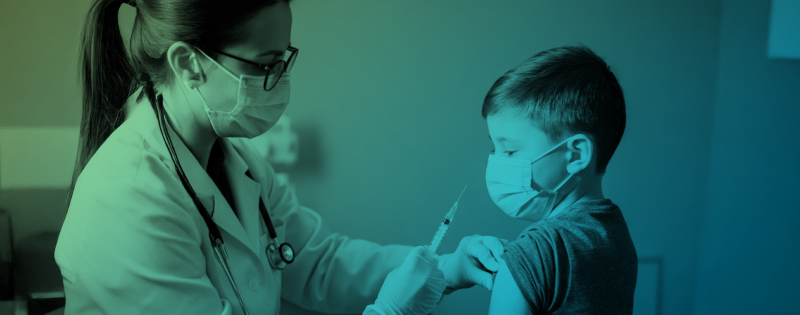Televox is proud to announce that its Enterprise Edition SMS solution has been awarded Gold…

Achieving Better Patient Outcomes With Effective Communication in Healthcare
Clear communication is the core of safe, effective care. When medical professionals explain things in plain terms, patients are more likely to follow instructions, ask questions, and share important details. Strong communication improves outcomes because everyone knows what to expect and what to do next. Let’s see how that can be achieved for better patient outcomes.
Importance of Communication in Healthcare
Good communication leads to better outcomes in healthcare, and it all starts with listening to one another. Patients with sensitive conditions, such as a fungal rash, would be more comfortable with a doctor who takes time out to listen and communicates professionally. That’s versus a doctor rushing through patients to get back on schedule.
Medical professionals have to learn to listen and communicate to make patients comfortable enough to not just talk about their health conditions, but also follow instructions. This effective communication approach is something all leading healthcare organizations understand, especially when it comes to building credibility within the local community.
Common Challenges to Effective Communication in Healthcare
Healthcare organizations looking to improve their communication have to face certain pitfalls. It’s important to identify them first before learning how to address them.
Health Literacy Issues
You cannot expect the average patient to understand complex medical terminology. Between “myocardial infarction” and “heart attack,” patients are likely to take the latter more seriously. They will also rarely admit confusion, fearing they’ll appear unintelligent.
Emotional and Psychological Barriers
It’s human for patients to become overly stressed after receiving difficult diagnoses, making it hard for them to process information. Someone who has just been diagnosed with cancer will only focus on the disease and not on the treatment plans being explained by the doctor. Since anxiety creates selective hearing, frightened patients end up missing critical details. This necessitates repeated explanations and written instructions for home reference.
Technology Gaps and Accessibility Issues
Technological advances are helpful in healthcare, but they’re not something most patients appreciate. Those living in rural areas might not have a stable internet connection to access their self-service portals. The elderly with limited technical skills or the disabled might have trouble navigating through complex interfaces. These factors make it difficult to improve patient engagement.
Lack of Follow-Ups or Consistent Engagement With Patients
It’s common for patients to forget or misunderstand instructions they received during their visit. Either that or they develop new questions without answers, making it critical for healthcare providers to follow up on their patients. If they fail to close communication loops, they lose the trust of their patients. For instance, a patient who leaves an unanswered message on a portal will eventually seek care elsewhere.
Inconsistent Use of Communication Channels
When appointment reminders come by email, test results through portals, and billing by mail, important messages get missed. This is because patients struggle to track their care story across different platforms. Additionally, communication method preferences vary by age group. Older patients often prefer phone calls, while younger patients expect text options.
Healthcare Staff Being Overextended
Rushed conversations lead to mistakes. When providers see 30 or so patients daily, each interaction gets compressed. Not to mention that burnout affects listening quality. Exhausted providers miss subtle clues in patient stories and rush through explanations to stay on schedule.
Key Strategies to Improve Communication in Healthcare
Medical professionals should take a close look at the practical approaches mentioned below. They will help them connect better with their patients.

Importance of Active Listening
Actively listening to your patients makes them feel valued and understood. Maintain eye contact when patients speak to show them you’re listening and acknowledging their issues. Catch important details to clarify so that they leave without any confusion. This is how medical professionals and staff build trust with patients.
Using Easy-to-Understand Language
When doctors speak in complex terms, they are just confusing their patients. For instance, why say “antihypertensive” when you can say “blood pressure medicine?”
Speaking in plain language and breaking down medical jargon gives clarity to patients. This is important because it enables patients to ask better questions about their health and follow care plans correctly.
Clear communication also reduces anxiety, as patients who understand their medical situation feel more in control of their healthcare decisions.
Leveraging Effective Patient Communication Solutions to Keep the Patients Engaged
Patient engagement strategies are key to effective communication in healthcare. Digital services like TeleVox allow for consistent check-ins, appointment reminders, and follow-up care instructions. These tools maintain communication between visits and reduce missed appointments through timely notifications.
Using an Omnichannel Approach for Better Accessibility
Healthcare organizations cannot limit patients to specific channels. Patients who prefer text messages will not appreciate receiving phone calls, and that too at the wrong hours. Hence, it’s important not just to have an omnipresent system, but also to know the best time to reach out. This increases the likelihood of patients actually acting on information. For instance, wellness tips and other educational materials are best received through email.
The Value of Personalized Communication
Personalized messages go a long way in gaining patients’ attention. Don’t just remember names and birthdays. Tailor messages by including references to their health conditions or previous visits. It shows patients that they are seen as individuals and not just another number in the system.
Educating Patients About the Importance of Communication
Patients need to understand why ongoing communication matters. Explaining how regular updates help providers track treatment progress encourages patients to stay in touch. Simple instruction on how and when to communicate health changes gives patients clear guidelines for maintaining contact with their healthcare team.
How Technology Helps in Bridging the Communication Gaps
Technology fills critical gaps in healthcare communication by providing tools that connect patients and providers more effectively. Digital solutions address timing constraints, language barriers, and information access issues that traditional communication methods can’t solve.
Automating Routine Communication Without Delays
Medical staff spend hours making appointment reminder calls and sending follow-up instructions. Automation handles these repetitive tasks accurately and consistently.
For example, TeleVox’s automated systems send appointment reminders through text messages, reducing no-shows by 30% in many practices. Staff members can then focus on direct patient care instead of administrative work.
Enabling Asynchronous Two-Way Communication
Patients and providers operate on different schedules. Asynchronous messaging lets both parties communicate when convenient.
For instance, patients can ask questions at 9 PM after remembering medication concerns, and providers can respond during office hours. This flexibility removes the frustration of phone tag and missed calls.
Patients feel more connected to their care team and ask questions they might have skipped during rushed appointments.
Using Embedded Communication Systems With EHRs
When communication platforms work with EHRs, patient conversations become part of their medical history. Staff see previous interactions before responding to new questions. These connections also allow automated messages based on specific health data, such as medication refill reminders triggered by prescription end dates.
24/7 Support and Access for Patients
Health concerns don’t follow business hours. Technology provides continuous access to information and basic support.
Chatbots answer common questions about medication timing, symptom management, and appointment scheduling at any time of day. On the other hand, patient portals give access to test results and health records whenever patients need them.
Multilingual Support to Eliminate Language Barriers
Language differences create significant healthcare obstacles. Thankfully, digital translation tools make communication possible across dozens of languages instantly. Patients receive instructions in their primary language, improving understanding and compliance.
Additionally, these tools translate patient responses back to providers, creating true two-way communication regardless of language differences.
Best Practices for Effective Communication to Achieve Better Outcomes
It takes a lot more than just speaking skills to effectively communicate with patients. Consider the practical approaches mentioned below as a core focus of major healthcare organizations to reach their communication goals.
- Invest in Scalable Digital Communication Tools: Every healthcare provider has plans to grow and expand. Hence, only choose communication systems that have the capacity to grow with you. Additionally, automated workflows can scale down on slower days, affecting cost and efficiency for the provider.
- Train Staff on Active Listening and Empathy: Create actionable scripts for the front desk staff to follow while allowing for personalization. Most importantly, role-play difficult conversations to give them the confidence to remain professional in a real situation.
- Monitor Communication Metrics to Improve Engagement: Have a plan to track response rates across different outreach methods and measure appointment adherence before and after implementing reminder systems. You can also record call volumes and resolution rates throughout the day to optimize staffing.
- Implement Feedback Loops With Patients: Your road to success is through patient feedback. Create short, targeted surveys after appointments or hospital stays to gain critical data. Make sure to contact patients who left negative reviews to promptly address their concerns.
- Foster Interdisciplinary Collaboration Through Shared Platforms: Create access to relevant patient information for all team members and establish clear documentation standards across specialties. Schedule regular case reviews with representatives from different disciplines and use terminology that works across specialties.

Take Your First Step Towards Better Communication With TeleVox
Effective communication is the backbone of better patient care, and TeleVox makes it effortless. Our SMART Agent empowers your team with intelligent, automated conversations that engage patients at every stage of the care journey.
From reducing no-shows to improving satisfaction and streamlining operations, our AI-driven communication solution delivers real results across your healthcare organization.
However, SMART Agent doesn’t just automate outreach, it personalizes it. Your patients receive the right message at the right time, improving adherence and trust while freeing your staff to focus on high-value tasks.
Whether you’re managing a single clinic or a large health system, TeleVox scales with your needs and delivers results you can track.
See for yourself what our SMART tech can do for you by scheduling a demo today.



